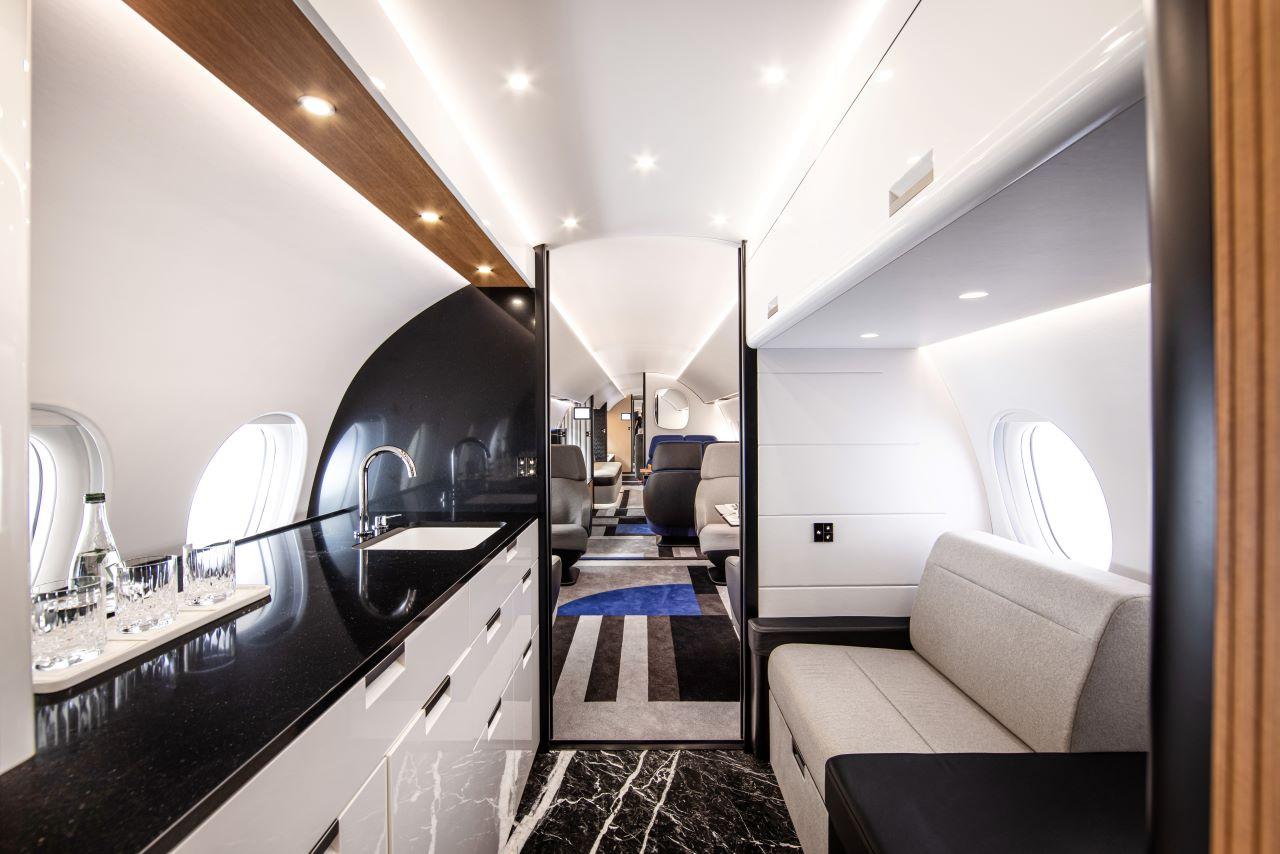
Where next for business aircraft manufacturers, which in recent times have been so focused on the long-range and large-cabins market that their aircraft are stacked like sardines at the top of the market?
There is a good reason for this heavy-metal congestion. This is where the money has been, the most lucrative and resilient sector through the ups and downs of the business aviation market.
But there are limits to how big an aircraft can be and how far it can fly. Depart London or New York and turn left or right in your 8,000-nm-range Gulfstream G800 and you can reach virtually anywhere in the world nonstop. And Dassault Falcon 10X’s cabin is the size of a small apartment–one that flies 7,500 nm at Mach 0.85.
Of course, aircraft such as these can fly shorter distances at higher speeds, but there are some practical restraints they have to obey. One is the 100,000-lb. gross-weight limit at key airports such as Teterboro, New Jersey. Another is the sound barrier. To certify its maximum operating Mach number of 0.925, Bombardier had to fly the Global 7500 to Mach 0.995 in tests. Any faster, and you are supersonic.
For a while, going supersonic was thought to be the next logical step for business aviation. There was a demand signal from fractional ownership companies for faster aircraft, and Aerion was well along in developing the AS2 supersonic business jet. But then, in May, Aerion abruptly closed its doors after failing to secure additional funding to complete development.
High speed may still be the holy grail for high-end business aviation, but not any time soon. Gulfstream has made no secret of its ambition to develop a supersonic business jet, but has been clear that it would not develop such an aircraft until global rules were changed to permit supersonic flight over land. Per current plans, that will not happen before 2026 at the earliest.
So if the next step is not yet speed, what about size? For sure the cavernous cabins Dassault is bringing to the market with the 102-in.-wide Falcon 6X and 109-in.-wide Falcon 10X will raise expectations across the market. But aerodynamics is unforgiving and pushing a wide cabin through the air, particularly a shorter one, takes a lot of power and energy.
Design house Dynze Technologies has floated the idea of a small blended wing-body (BWB) aircraft as both a large business aircraft and “super-regional” airliner. As a business jet with a 100,000-lb. gross weight, within the limit set by Teterboro, the small BWB offers three times the floor area for the same performance as today’s purpose-designed long-range, large-cabin jets, says Dzyne. But whether traditionally conservative business-aircraft customers would embrace the radical BWB is not certain.
So where next can manufacturers pull on the lever? There is efficiency and sustainability, but the range and speed requirements of business aircraft do not lend themselves to electric or hydrogen propulsion. And the tens of thousands of smaller airports globally that are used by business aviation present an almost insurmountable infrastructure hurdle to introducing new energy sources, for decades at least.
The business aviation market is already embracing sustainable aviation fuels (SAF) and its aircraft and engine manufacturers are likely to be among the first to achieve compatibility with 100% SAF once it is approved and available in sufficient quantities. But, writ large, it looks like business aviation will have to rely on continued steady improvements in turbine engine fuel efficiency for decades to come.
Business aviation has long been an early adopter of new technology, a market with the appetite for new ideas and the ability to afford them. That has been particularly true in the cockpit, and has brought us to the touch-screen displays and active fly-by-wire sidesticks of Gulfstream’s Symmetry flight deck.
Honeywell’s unveiling of its fifth generation of integrated flight deck, Anthem, makes clear where the industry is headed next: always-on connectivity, cloud-based apps running securely in the cockpit, and increasing levels of automation to simplify operation and, perhaps, reduce crewing requirements.
For now, there seems no way out of the competitive logjam at the top of the business-jet market, but the new cabin standards and cockpit technologies in those aircraft will likely filter down–especially if the recent increase in demand for private aviation leads to renewed interest in midsize and lighter business jets. Manufacturers have plenty of places to go in the market, they just might not be upward.





